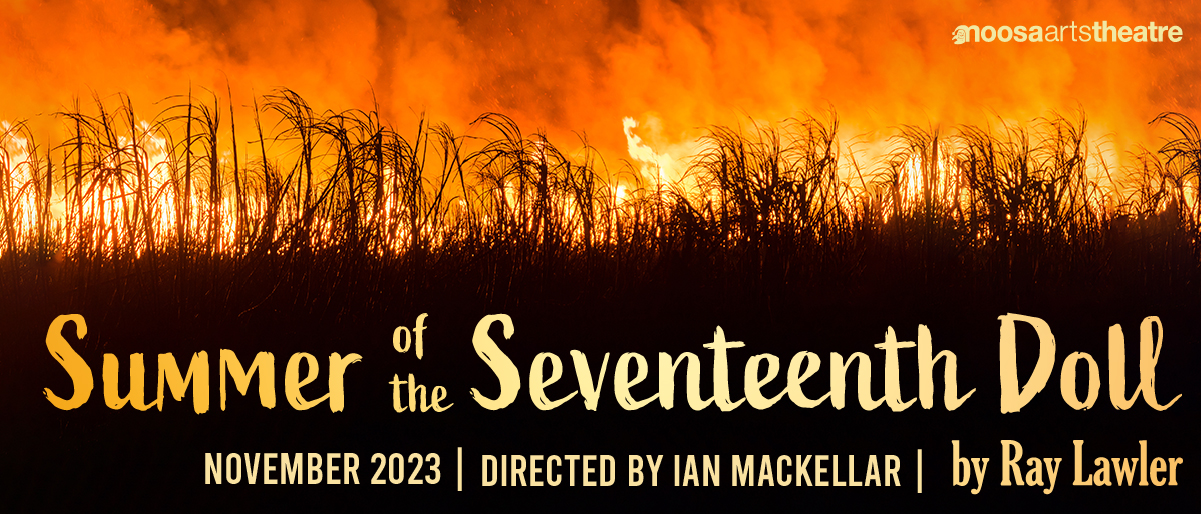
DATES
Preview: November 2 – all tickets $25
Evenings: November 3, 9, 10, 16, 17 at 7:30pm
Matinees: November 4, 5, 11, 12, 18 at 2:00pm
TICKETS
Adults $35 | Concessions $30
Member/Group $25 | U18 $25
Summer of the Seventeenth Doll is a pioneering Australian play written by Ray Lawler and first performed at the Union Theatre in Melbourne, Australia on 28 November 1955.
The play is unanimously considered to be amongst the most historically significant in Australian theatre history, openly and authentically portraying distinctly Australian life and characters.
The play is set in Australia, in the Melbourne suburb of Carlton and it details the events of the summer of 1953, in the lives of six central characters. This summer is different from others; it is full of tensions, strains to recreate lost youth, and from what is said of previous years, not a fraction of the fun that others have been.
Lawler’s much-loved tale of Queensland cane cutters and Melbourne barmaids has endured, not through nostalgia, nor because it spawned a new age in Australia writing, but because the characters and their dilemmas are so true, so beautifully observed, so humorous and so poignant.
Summer of the Seventeenth Doll is part of a trilogy referred to as the Doll Trilogy.
This production will be directed by Ian Mackellar.
REVIEWS:
Australian Stage: “The Doll is a wonderful piece of theatre, that isn’t really about a moments in our past, but about the search for love and the disappointments, denial and heartbreak that can come to those who refuse to see the realities of the world around them”.
Arts Review: “A story of love, heartache, hope and loss, Ray Lawler’s Summer of the Seventeenth Doll remains one of the most moving explorations of the fading of youth and dreams”.
“Summer of the Seventeenth Doll” provides a rare and theatrically realistic glimpse into and Australian working-class psyche that is not simply from the past but is still ever present.”
Arts Hub: “Hope, love, morality, delusion, class identity and gender equity are all explored within a single setting of a 1950’s inner city Melbourne lounge room; the familiar setting ensuring the conflict resonates with audiences even 70 years down the track”.
